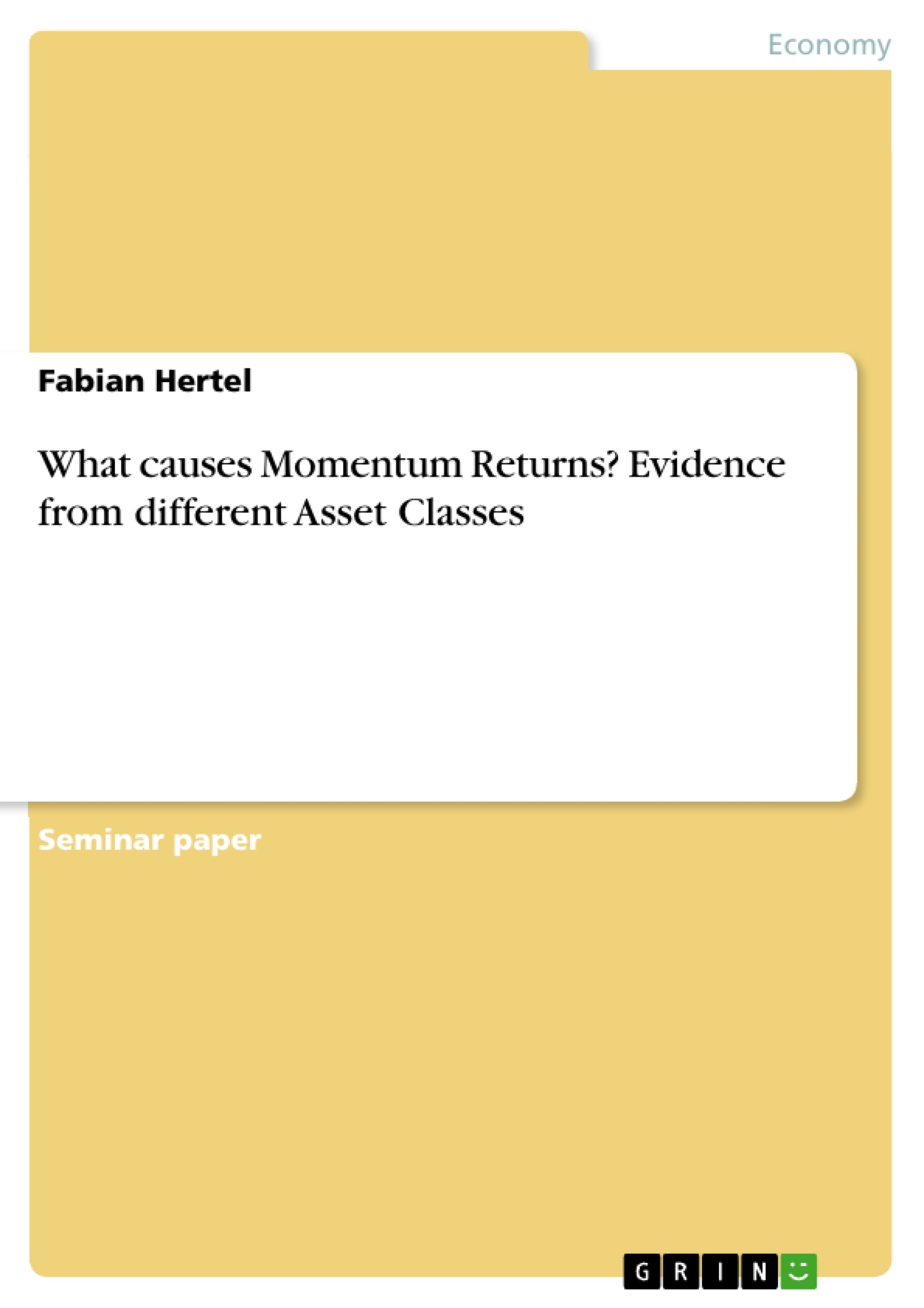This paper discusses possible asset-specific and cross-asset explanation approaches for momentum appearance. The two main threads in literature, stock momentum and momentum of other assets, are discussed separately and subsequently checked for overlaps. The paper also deals with the definition of momentum as an anomaly itself in context of rational and behavioral concepts. It uncovers selected contrary observations and outlines possible conformities.
Capital market anomalies are a phenomenon triggering ongoing debates about the trading behavior of investors on financial markets. They are contradicting the core ideas of the efficient market hypothesis (EMH), which considers financial markets efficient and investors rational and fully informed. One of the EMH key hypotheses, especially supported by Fama and by Samuelson, is the principle of random walk.
If this principle holds, the prices of assets on financial markets are only influenced by public and firm-specific news, develop apart from that completely random and are not predictable. However, empirical observations question the random walk principle. They tend to indicate specific patterns in asset price developments instead of complete randomness. Doubts on the EMH and the random walk principle thus cannot be neglected.
A common answer to these observations is the existence of additional risk factors which are currently not covered by the applied pricing models. Current asset pricing models mainly rely on Markowitz (1952) and the modern portfolio theory as well as on the Capital Asset Pricing Model (CAPM) from Sharpe (1964), Lintner (1965), and Mossin (1966). These models are rather a benchmark for asset pricing than perfect constructions covering all and any existing risk factors which are relevant for an assets price formation.
Inhaltsverzeichnis (Table of Contents)
- 1. Introduction
- 2. Momentum as a Capital Market Anomaly
- 2.1 Evidence from Equity Markets
- 2.2 Evidence from other Asset Classes
- 3. Explanatory Approaches
- 3.1 Explanatory Approaches for Equity Markets
- 3.2 Explanatory Approaches for other Asset Classes
- 4. Cross-Asset Explanatory Approaches
- 4.1 Approaches in Accordance with the Efficient Market Hypothesis
- 4.2 Approaches in Accordance with Behavioral Finance
- 5. Transferability of Explanatory Approaches
- 5.1 Contrary Observations
- 5.2 Equal Approaches
- 6. Conclusion
Zielsetzung und Themenschwerpunkte (Objectives and Key Themes)
This paper delves into the phenomenon of momentum returns, exploring its existence across various asset classes and investigating potential explanations for its occurrence. It aims to shed light on the complexities of momentum as a capital market anomaly, examining both rational and behavioral perspectives.
- The existence and prevalence of momentum returns in equity markets and other asset classes.
- The explanatory approaches for momentum returns, including those aligned with the Efficient Market Hypothesis (EMH) and behavioral finance.
- The transferability of explanatory approaches for equity momentum to other asset classes.
- The role of under- and overreaction in explaining momentum returns.
- The definition of momentum as an anomaly in the context of rational and behavioral finance.
Zusammenfassung der Kapitel (Chapter Summaries)
- Chapter 2: Momentum as a Capital Market Anomaly: This chapter introduces the concept of momentum returns as an anomaly observed in financial markets. It provides evidence for momentum returns in equity markets and four other asset classes: commodities, bonds, currencies, and indices.
- Chapter 3: Explanatory Approaches: This chapter explores various explanatory approaches for momentum returns in different asset classes, including stocks. It examines factors such as investor sentiment, information dissemination, and behavioral biases.
- Chapter 4: Cross-Asset Explanatory Approaches: This chapter focuses on explanatory approaches that apply across multiple asset classes. It classifies these approaches based on their consistency with the EMH and behavioral finance theories.
- Chapter 5: Transferability of Explanatory Approaches: This chapter examines the generalizability and transferability of the explanatory approaches for equity momentum to other asset classes. It highlights both contrasting observations and shared approaches.
Schlüsselwörter (Keywords)
The paper focuses on momentum returns, capital market anomalies, efficient market hypothesis (EMH), behavioral finance, under- and overreaction, investor sentiment, information dissemination, and asset pricing models.
- Citar trabajo
- Fabian Hertel (Autor), 2021, What causes Momentum Returns? Evidence from different Asset Classes, Múnich, GRIN Verlag, https://www.grin.com/document/1176923



